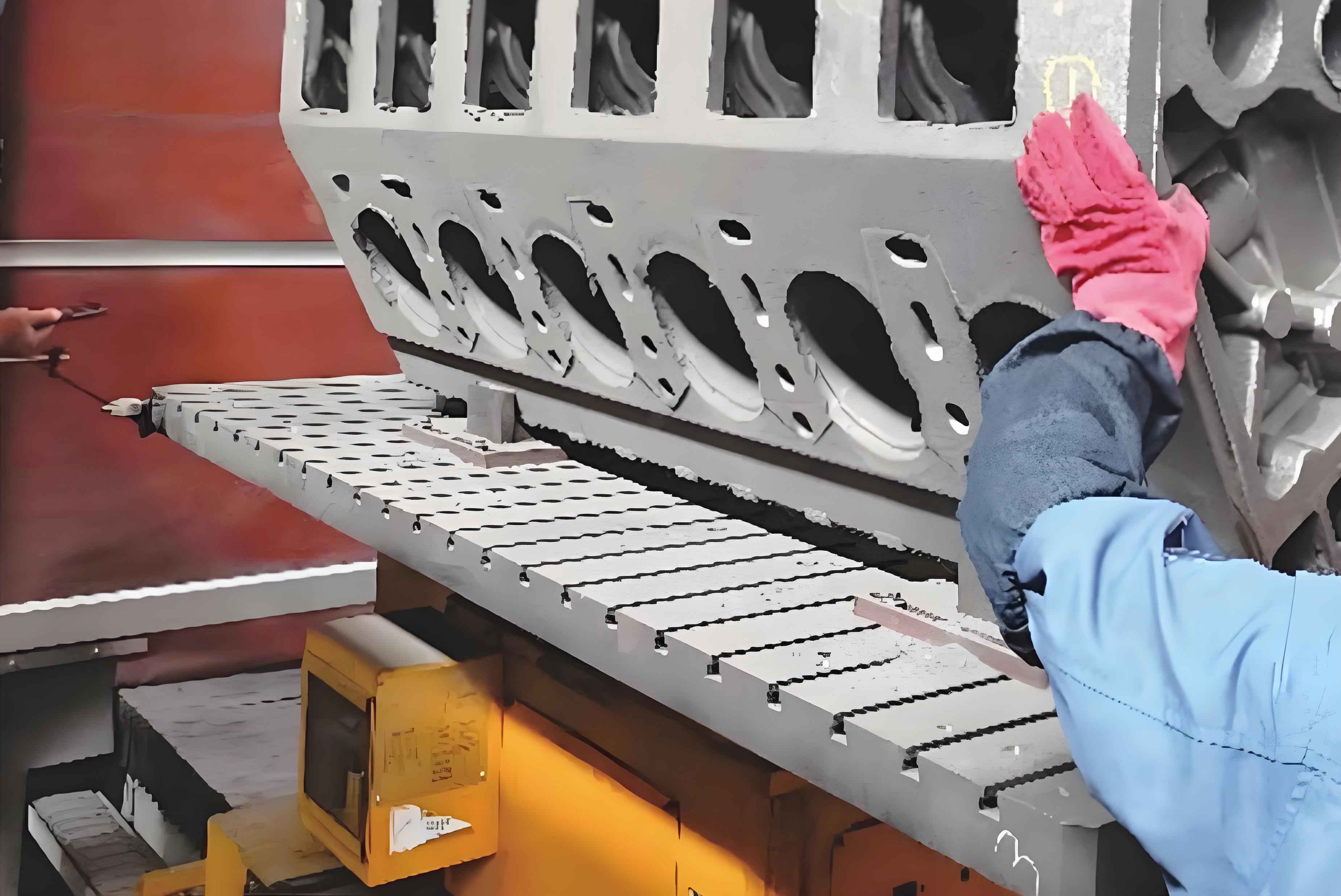Abstract
This study addresses the critical need for fault diagnosis in an in-line six-cylinder diesel engine cylinder block by investigating its vibration characteristics and the influence of crankshaft deformation. A finite element method (FEM)-based approach is adopted to analyze the engine’s working mechanism, construct a 3D model of the cylinder block-piston-crankshaft assembly, and simulate its dynamic behavior. The first eight natural frequencies and corresponding vibration modes are extracted, and sensor placement strategies for vibration measurement are proposed. By isolating crankshaft deformation as a single variable, the impact on vibration amplitude is quantified. Results demonstrate that the methodology is robust, with practical implications for optimizing engine design and enhancing operational reliability.

Introduction
The engine cylinder block is a critical component in diesel engines, directly influencing performance, vibration, and durability. In high-power applications such as construction machinery, excessive vibrations caused by crankshaft deformation can accelerate wear, reduce efficiency, and lead to catastrophic failures. Traditional analytical methods struggle to capture the complex dynamics of multi-body systems like the cylinder block-piston-crankshaft assembly. This study leverages FEM to overcome these limitations, enabling precise identification of natural frequencies, vibration modes, and deformation effects.
Methodology
1. System Modeling and Boundary Conditions
A 3D model of the engine cylinder block assembly was developed using CAD software, incorporating geometric details of the cylinder block, pistons, and crankshaft. Boundary conditions were defined based on real-world constraints:
- Fixed constraints at the cylinder block sides.
- Cylindrical support constraints at the crankshaft ends.
The governing equation for free vibration analysis is:Mx¨+Kx=0Mx¨+Kx=0
where MM is the mass matrix, KK is the stiffness matrix, and xx represents displacement. Solving the eigenvalue problem:det∣K−ω2M∣=0detK−ω2M=0
yields the natural frequencies ωiωi and mode shapes XiXi.
2. Modal Analysis
The first eight natural frequencies of the engine cylinder block assembly are summarized in Table 1.
Table 1: Natural Frequencies of the Cylinder Block Assembly
| Mode | Frequency (Hz) |
|---|---|
| 1 | 152.30 |
| 2 | 214.51 |
| 3 | 311.08 |
| 4 | 336.53 |
| 5 | 347.96 |
| 6 | 396.97 |
| 7 | 433.19 |
| 8 | 575.42 |
All frequencies exceed 150 Hz, indicating a high-stiffness design. Resonance risks arise when external excitation frequencies match these values.
3. Vibration Mode Characteristics
The mode shapes reveal maximum displacements at the crankshaft, connecting rods, and central cylinders (Figure 1). These regions are identified as structural weak points, guiding sensor placement for vibration monitoring.
Crankshaft Deformation Impact Analysis
1. Simulation Setup
Crankshaft deformation was modeled as a single variable, with other parameters held constant. Vibration responses (displacement, velocity, acceleration) were measured at eight critical locations on the engine cylinder block (Table 2).
Table 2: Vibration Response Under Undeformed Crankshaft
| Position | Displacement (mm) | Velocity (mm/s) | Acceleration (mm/s²) |
|---|---|---|---|
| 1 | 0.2053 | 0.3975 | 0.3967 |
| 2 | 0.2851 | 0.5675 | 0.5666 |
| 3 | 0.2884 | 0.5722 | 0.5733 |
| 4 | 0.0224 | 0.0447 | 0.0389 |
| 5 | 0.1567 | 0.3083 | 0.3089 |
| 6 | 0.2024 | 0.4029 | 0.4032 |
| 7 | 0.2026 | 0.4074 | 0.4056 |
| 8 | 0.0773 | 0.1521 | 0.1458 |
2. Deformation-Induced Amplification
Crankshaft deformation amplified vibration amplitudes by 2–4 times (Table 3). Central regions (Positions 2, 3, 6, 7) exhibited the highest increases due to reduced structural support.
Table 3: Vibration Response Under Deformed Crankshaft
| Position | Displacement (mm) | Velocity (mm/s) | Acceleration (mm/s²) |
|---|---|---|---|
| 1 | 0.3958 | 2.1537 | 2.2015 |
| 2 | 1.4100 | 2.8067 | 2.7948 |
| 3 | 1.4114 | 2.7886 | 2.8011 |
| 4 | 0.0666 | 0.1283 | 0.1407 |
| 5 | 0.9774 | 1.9141 | 1.9182 |
| 6 | 1.3724 | 2.7107 | 2.7208 |
| 7 | 1.3637 | 2.7199 | 2.7081 |
| 8 | 0.3958 | 0.7741 | 0.7729 |
The relationship between deformation (ΔΔ) and displacement (DD) follows:D=D0(1+αΔ)D=D0(1+αΔ)
where D0D0 is the baseline displacement and αα is a deformation coefficient (empirically determined as 0.8–1.2).
Discussion
1. Sensor Placement Optimization
Based on mode shapes and deformation effects, vibration sensors should prioritize:
- Central cylinder walls (Positions 2, 3, 6, 7).
- Top surfaces near high-stress regions.
2. Resonance Avoidance
Operational frequencies must stay outside the 152.30–575.42 Hz range to prevent resonance. This requires:
- Stiffening crankshaft supports.
- Adjusting ignition timing to shift excitation frequencies.
3. Thresholds for Fault Diagnosis
Thresholds for displacement (DmaxDmax), velocity (VmaxVmax), and acceleration (AmaxAmax) are proposed:Dmax=0.3 mm,Vmax=0.6 mm/s,Amax=0.6 mm/s2Dmax=0.3mm,Vmax=0.6mm/s,Amax=0.6mm/s2
Exceeding these values indicates crankshaft deformation or impending failure.
Conclusion
This study establishes a FEM-based framework for analyzing the engine cylinder block’s vibration modes and crankshaft deformation effects. Key findings include:
- The first eight natural frequencies (152.30–575.42 Hz) guide resonance avoidance strategies.
- Crankshaft deformation amplifies vibration amplitudes by 2–4×, necessitating real-time monitoring.
- Sensor placement at central cylinder walls and top surfaces optimizes fault detection.
The methodology enhances diesel engine reliability, reduces maintenance costs, and supports automated fault diagnosis systems. Future work will integrate machine learning for predictive maintenance.
